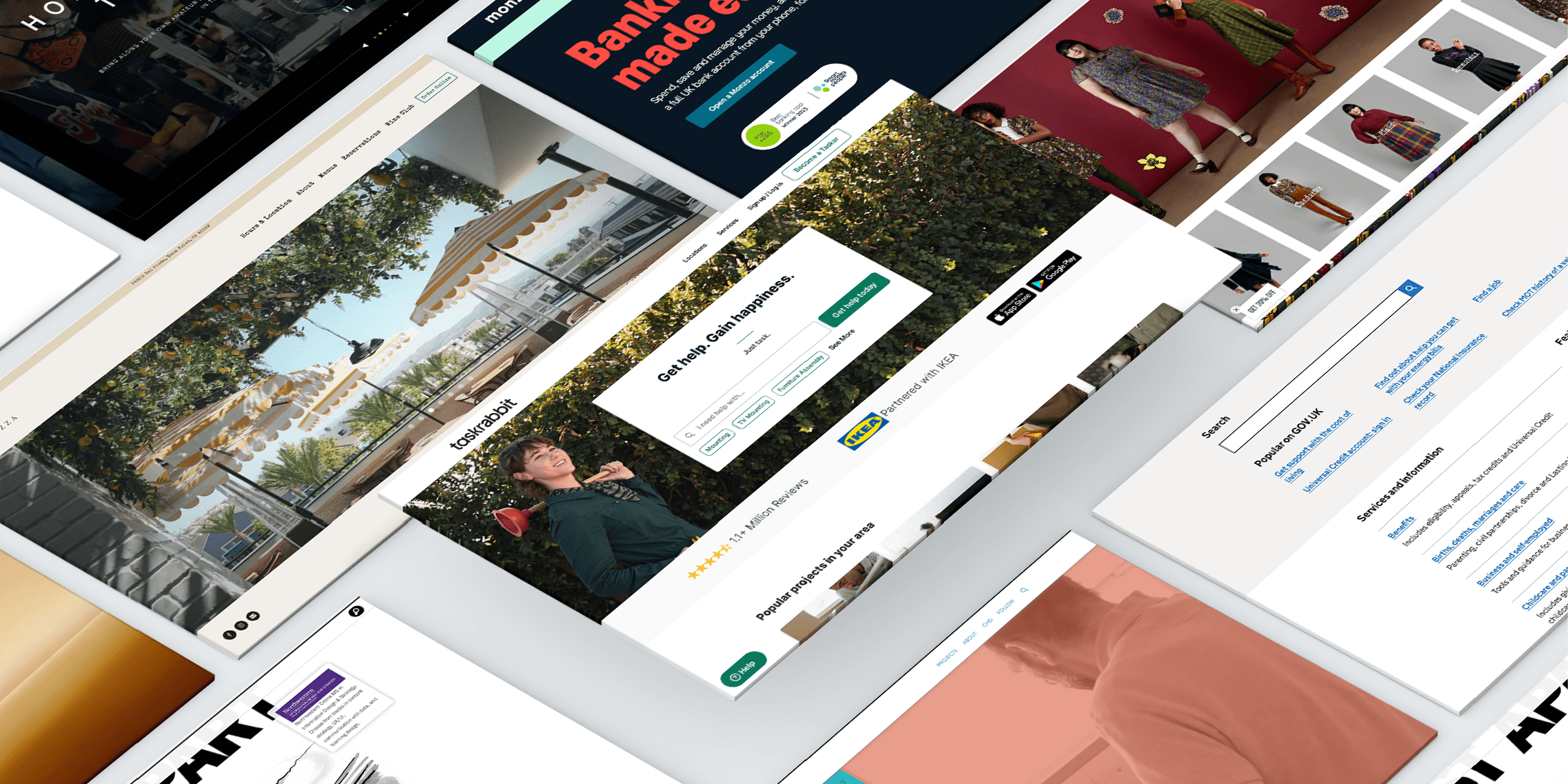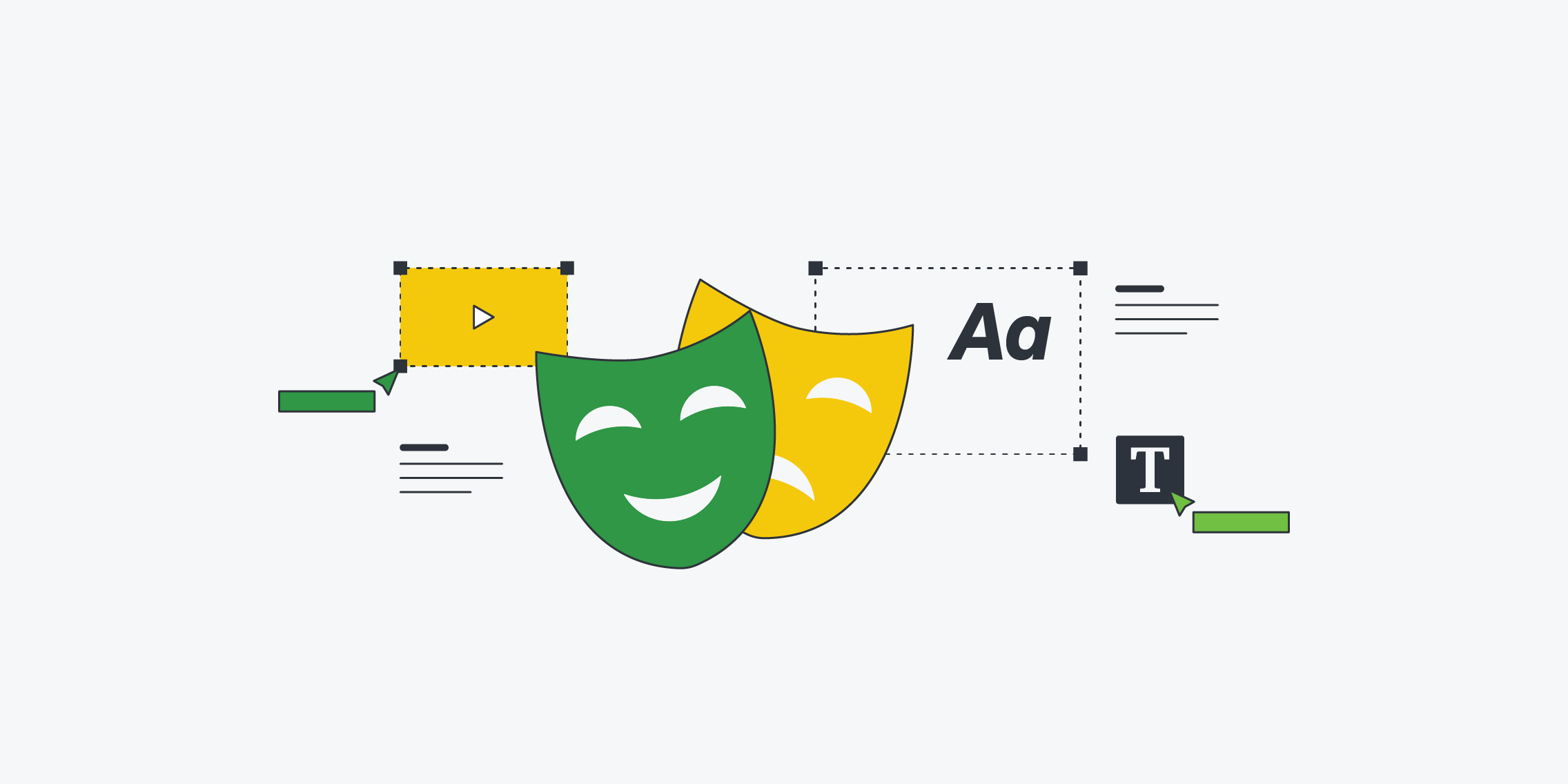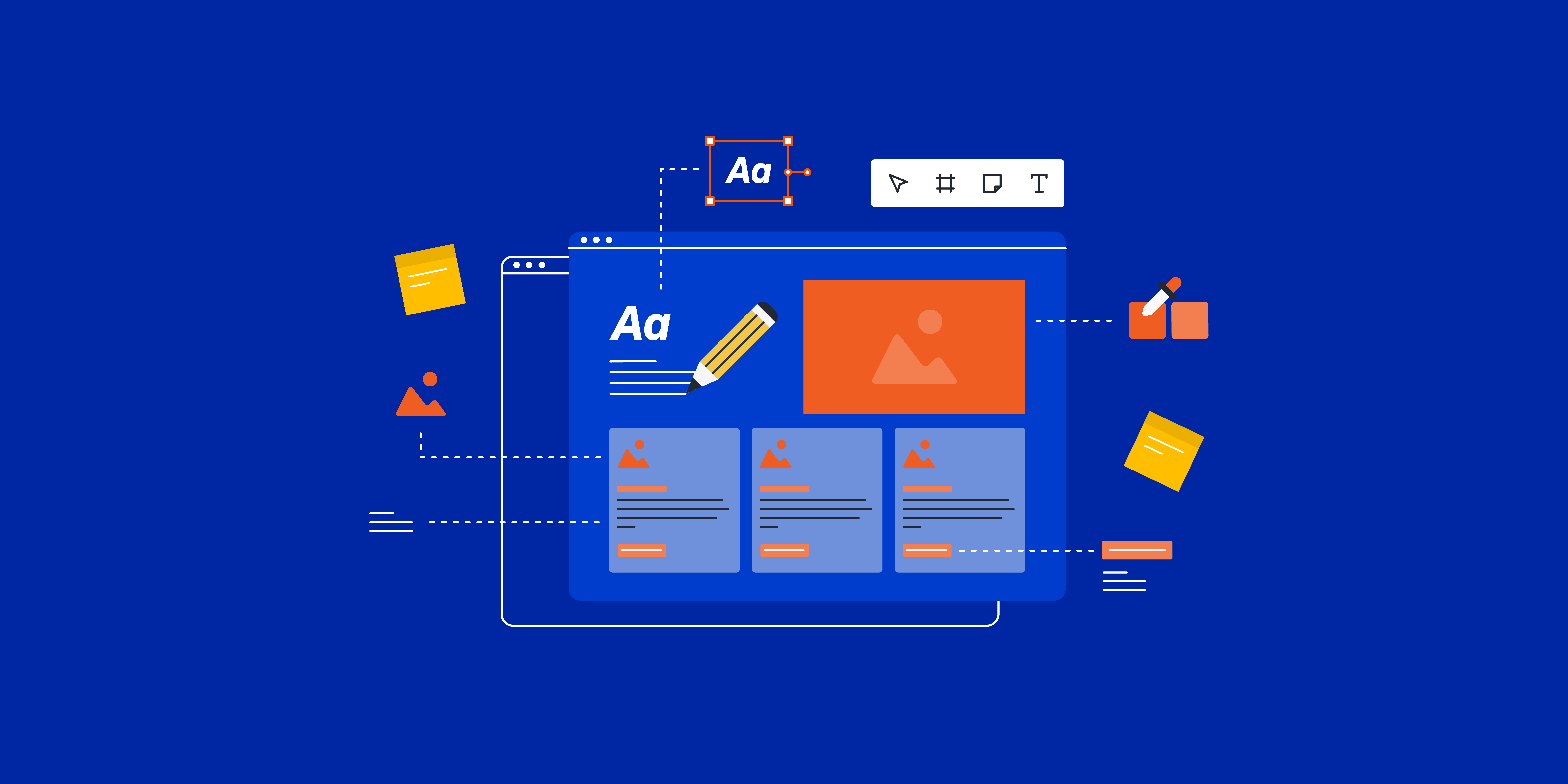Think of your favourite digital product—an app or a website you use regularly.
Now imagine how that product would look and feel without carefully crafted content. Would it still be easy to use? Would you know how to navigate from A to B?
We may not give it much thought, but content is a fundamental pillar of good UX. And, with the rise of content-first design, more and more brands are prioritising content within the product development process.
But what is content-first design and what does it look like in action? What are the benefits, and how can you foster this approach within your own design practice?
Keep reading. We’ve covered everything you need to know about content-first design, complete with actionable steps you can implement right away.
What is Content First Design?
To quote Candi Williams, Content Design Director at Bumble: “Language can make or break the user experience, and it should always help shape it.”

But what does that mean exactly?
If you consider the traditional or typical approach to product design, you’ll notice that content doesn’t really feature in the early stages of the process. The initial focus is on determining the structure and flow of the product, mapped out with wireframes and prototypes.
Then, towards the end, attention turns to the finer details of the product interface. Grayscale elements are finally adorned with colour, and ‘Lorem ipsum’ is replaced with actual words.
Content-first design flips this approach on its head. Instead of being treated as a mere afterthought or ‘cake topping’, content actually shapes the product.
With a content-first approach, the end-to-end user experience is considered and mapped out in terms of the words and messaging that the user will need to navigate a product and accomplish their desired tasks. The product is then designed and built with this content in mind.
In simplified terms:
- Traditional design = wireframes plus lorem ipsum. The product content is added towards the end of the process and must fit a predetermined layout.
- Content-first design = mapping out the user experience in terms of words and messaging. This ensures that the product’s content and its visual design work in perfect harmony.
That’s content-first design in a nutshell—but why does it matter? Let’s dive deeper to explore the value of this approach.
Why does content-first design matter?
Imagine you want to write a book. You’ve got a specific story you want to tell; a message you want to convey to the reader. But you’re not free to just write the words that will tell your story. You’re given a set number of pages, with boxes of various shapes and sizes on each page—and you have to write your story in a way that fits into those boxes and pages.
With that approach, crafting an engaging narrative and connecting with the reader becomes significantly more challenging. As if writing a book isn’t difficult enough!
A similar thing happens when content isn’t factored into the product design process; you end up tailoring your words and messaging to fit into a predetermined design. This results in less-than-optimal content throughout the product—and ultimately impacts the user experience.
So what happens when you flip that on its head and take a content-first approach? Well, two things:
- You ensure a better user experience
- You optimise and streamline your product design process
How so? Let’s take a look.
Content-first design improves the user experience
When it comes to product design, words aren’t simply added to decorate the interface or make the user smile. If you pay close attention to your favourite websites and apps, you’ll notice that content has a huge impact on how you use and experience those products.
The words and messages featured throughout the interface embody and shape the product’s core functionality and purpose. They ensure you have all the information you need at just the right moment. They guide you from A to B, prompt you when you need to take action, steer you back in the right direction when you take a wrong turn, present you with instructions and solutions, provide confirmation and reassurance…and the list goes on!
Without that content, the entire user experience would look and feel totally different. So, when designing a digital product, it’s important to consider the content the user will need before you determine the product’s structural and visual design.
When you take a content-first approach, you ensure that the content and visual design work together in tandem—giving the user everything they need to effectively navigate and interact with the product. And that’s ultimately what good UX is all about, right?
A content-first approach improves your overall design process
It’s not just the end users who benefit from content-first design. A content-first approach will ultimately streamline and optimise the overall design process, making life easier for everybody involved.
If you factor content in from the get-go, you avoid having to go back and revise your designs at the eleventh hour when you realise you don’t have the space you need for crucial content.
And, when you invite everybody to contribute in the early stages—including UX writers and content designers—you not only benefit from a multitude of valuable perspectives; you also foster stronger communication and collaboration. That’s a big win for any team!
What are some examples of content-first design?
We know what content-first design means and why it’s beneficial—but what does it look like in action? Here are some familiar brands and products that employ a content-first approach.
Content-first design at Airbnb
Airbnb provides an excellent case study of how content-first design can create outstanding user experiences.
Writing about how the company embraces a content-first approach, Marissa Phillips, former Head of Content Strategy & Director of UX Writing at Airbnb, explains:
“At Airbnb, a company founded by designers, content strategists play an integral role in shaping our core product experiences. We [the content strategy team] work very closely with our design partners, and although we sometimes need to explain content strategy or our approach, we rarely have to make the case for staffing a project with a content strategist.”
In terms of how that content-first approach looks on a day-to-day basis, Marissa emphasises the importance of having UX writers and content designers involved from the very beginning of the design process—and how cross-functional collaboration is key:
“We do our best work when we can get involved early on in the product development process. We sit by our designers to map out entire flows, agree on a hierarchy of information, and weigh different approaches to the design or content, and we use insights from research and data science to inform our recommendations. We look to product managers to help us understand the problems we’re solving and the information we need to convey to people using our products.
We collaborate with engineers, bring in our legal team to review content from a policy lens, and work with language managers on our localization team to make sure our ideas translate well. We’re responsible for all the words on a given screen, but in many ways, our role is to help our teams balance business goals and constraints with the needs of our global community of hosts and guests.”
It’s no coincidence that Airbnb is one of the most successful products of its kind, both from a business perspective and in terms of customer satisfaction. Content-first design for the win!
You can read Marissa Phillips’ full article here: Content Strategy at Airbnb: Building Our Practice.
Content-first design at HubSpot
HubSpot is another testament to the benefits of a content-first approach.
In an interview with UX Design Institute’s Gareth Dunlop, Lara Tacito, HubSpot’s Senior Director of UX, emphasises how words—and content design in general—provide the most solid starting point from which to approach a product’s design:
“A lot of designers are visual thinkers, and I believe they can do their best work in the context of words. If you can articulate what you’re trying to design and accomplish, that can give you a headstart when it comes to creating the structure.”
To keep content design and visual design working in harmony at HubSpot, Lara champions the use of object-oriented UX (OOUX). An approach borrowed from engineering, OOUX involves identifying the key objects within a content system, thinking about how different objects work together, and what actions can be taken on or with the object.
These content objects then go on to inform the overall design system, ensuring utmost consistency and usability within the product itself.
We’ve shared just two examples of content-first design in action, but you can bet that many of the most successful websites and apps are using this approach. There really is no such thing as good UX without good content design—the two go firmly hand-in-hand.
With that, let’s explore how you can adopt a content-first approach within your own design process.
How to do content-first design: 5 actionable steps
Embracing content-first design might seem daunting, but it’s not as difficult—or as radical—as you may think. With a few tweaks to your existing design process, you can give content a well-deserved seat at the table.
So how can you embrace content-first design?
1. Involve UX writers and content designers early and often
In a conventional UX design process, words and content tend to be tagged on at the end. UX writers and content designers may not be involved until much later on, once the design has already taken shape. In many cases, dedicated UX writers and content designers may not even exist within the team.
If you want to switch to a content-first approach—or at least a more content-driven approach—it’s essential to involve UX writers and content designers early and often. And, in the absence of dedicated experts, take it upon yourself to make sure that content is factored in from the very beginning.
This means thinking about content when you conduct user research and define user problems, when you hold ideation sessions, map out user flows, come up with solutions, and start to design those solutions.
Ultimately, you should start thinking about content design at the very same moment you start thinking about visual design. This will ensure that the two evolve in tandem.
2. Devise a clear content strategy
A content strategy is like your content design compass. It sets out an overarching vision for what your content should achieve, factoring in both end user needs and business objectives.
The first step towards a solid content strategy is user research (see—content-first design isn’t all that different from ‘regular’ design after all!). Frame your user research through the lens of content, with the goal of figuring out your users’ needs and pain-points in relation to future and existing content within the product.
Ultimately, you want to define the overall purpose the content should serve throughout your product. This will eventually help you to create content that’s optimised for each step in the user journey.
3. Audit your existing content
A content-first approach also involves auditing and improving your existing content. This can be a mammoth task, so start with the most important user touchpoints and work your way up from there.
For each key touchpoint, identify what purpose the content should serve. For example, should it guide the user through a particular process? Or help them get back on track after an error has occurred?
With clearly-defined goals, assess the quality, relevance, and effectiveness of the existing content. Is there any important content missing? Any unnecessary content that can be removed? Does the content support your content strategy or could it be improved?
By taking stock of what you’ve already got, you can identify gaps, redundancies, and areas for improvement—laying the foundation for a content-first approach going forward.
4. Say goodbye to Lorem Ipsum
This is a simple yet powerful practice that will propel you towards a content-first approach: do away with Lorem Ipsum and make sure you’re wireframing and prototyping with actual content.
By implementing this ‘rule’, you make it impossible (or at least very difficult) to move the design process forward before you’ve considered content—and that’s ultimately what content-first design is all about.
5. Test and iterate continuously
You can’t just design your product’s content once and consider it done forever. Just like any other aspect of the product, content should be subjected to ongoing testing and iteration.
Monitor how users interact with your content, run A/B tests to experiment with different messaging, and continuously measure how the content performs in relation to your strategy. This will ensure that content remains front and centre as your product, and your users’ needs, evolve over time.
How to establish a content-first culture within your team or company
If you want content-first design to become a ‘way of life’ within your team and your company, it’s important not only to adapt your design practice, but also to foster a content-driven culture. Here’s how you can do so.
1. Promote the benefits and get stakeholder buy-in
First and foremost, make sure everybody understands why content-first design is worth pursuing. Foster a common understanding of what content-first design means and why it’s beneficial—both for the end user and the business. You might hold a lunch-and-learn session for the entire company, or put together a presentation that people can access in their own time.
2. Create universal processes, guidelines, and conventions
Next, work towards formalising and standardising your content-first approach. Work collaboratively with product stakeholders (including, of course, UX writers and content designers) to develop clear processes and guidelines for how content should be factored in at every stage of the product’s lifecycle.
At the same time, create style guides and conventions that facilitate quality and consistency across your entire content architecture. This will ensure that everybody’s on the same page when it comes to creating content—and that everybody is working to the same (high) standard.
3. Develop your team’s UX writing and content design skills
If you don’t have dedicated UX writers in-house, take steps to hone and develop your team’s UX writing skills. You might hold content design workshops and training sessions, create a UX writing resource library with tips and guides, or invest in formal training via a professional content design course.
The takeaway
Implementing a content-first approach isn’t about placing content above design. It’s about having the two work in harmony for maximum impact and, ultimately, a better user experience.
With the practical steps we’ve outlined, you can gradually foster a more content-led culture and design practice within your organisation—and reap the rewards for your end users, your team, and the business at large.
Learn more about the role of content in UX design
Content has a crucial role to play in UX design—and we’ve only just scratched the surface. For further tips and insights, check out the following:
- 7 UX writing guidelines to optimise your content
- The 6 most important content design principles (with examples)
- The best AI tools for content design





